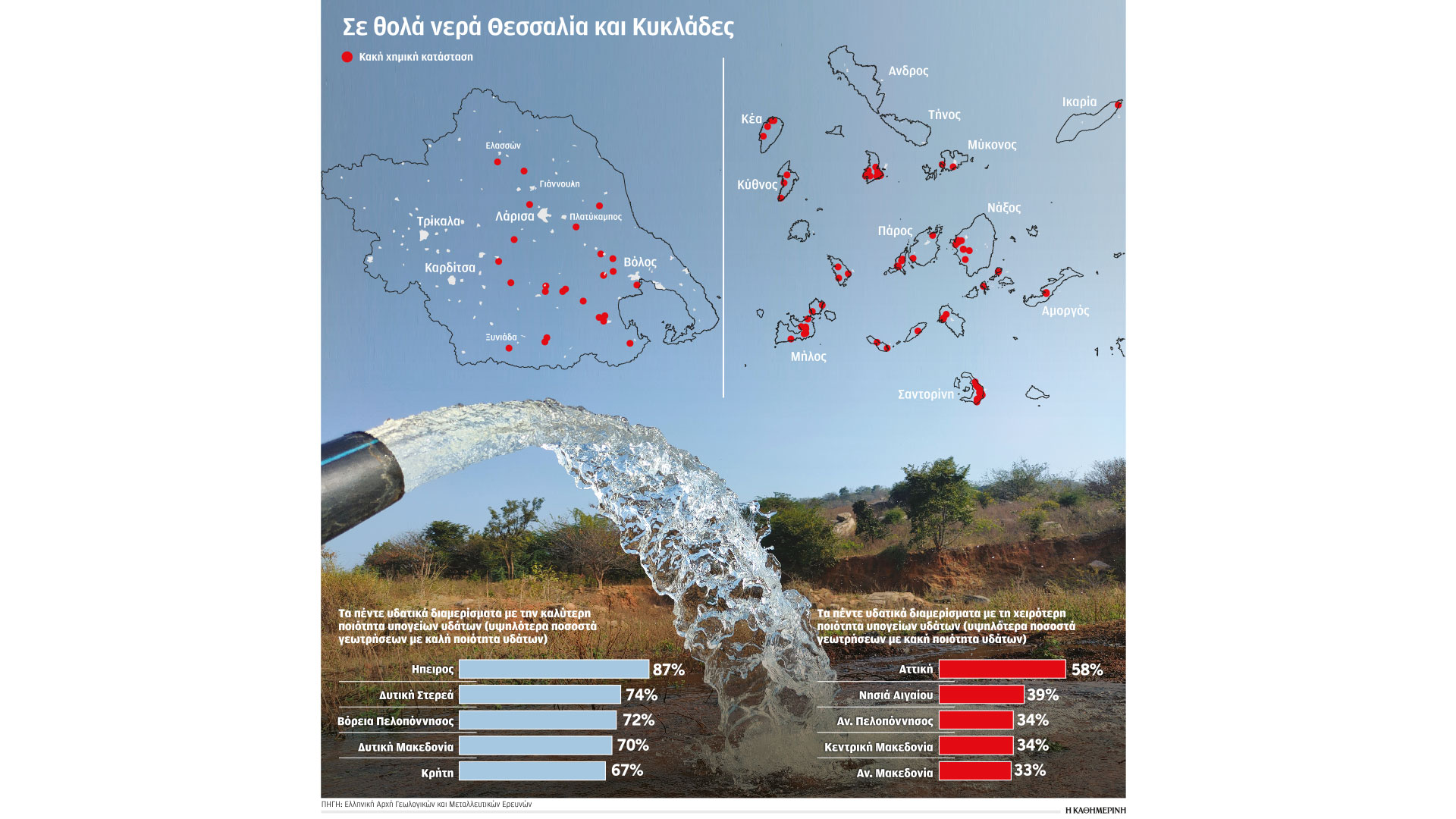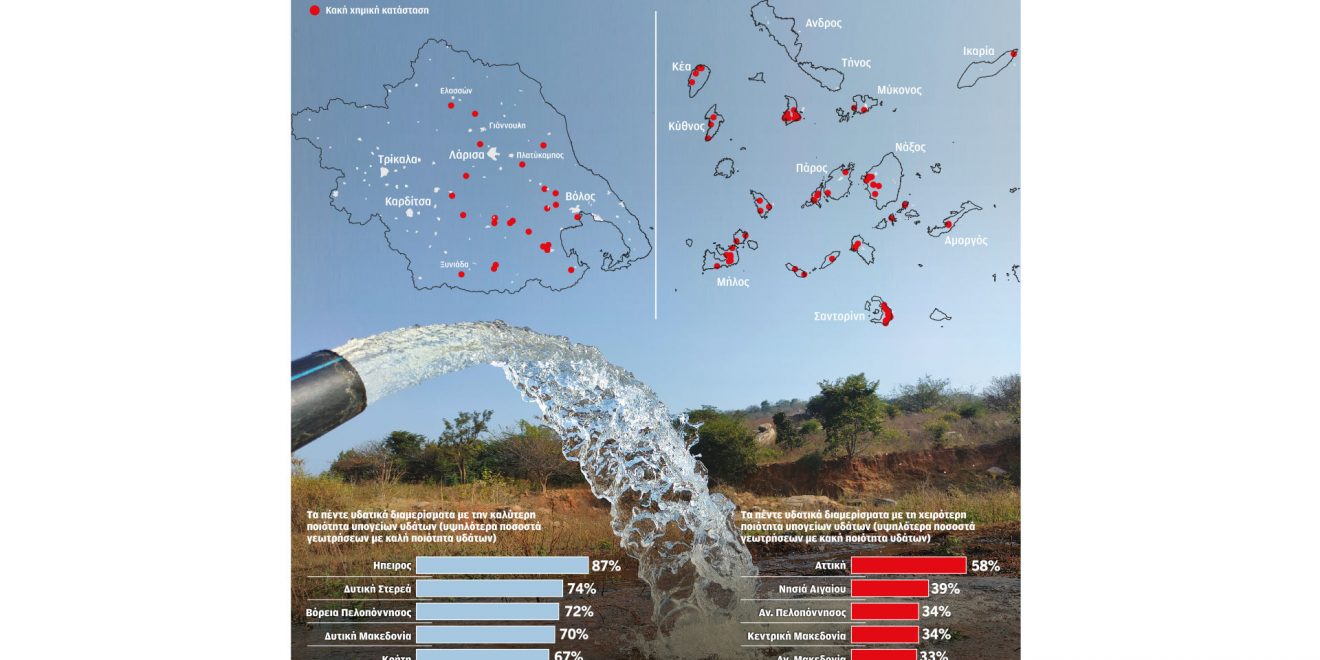Over a third of Greece’s underground water is of poor quality, according to the 2022 annual report from the Hellenic Survey of Geology & Mineral Exploration (EAGME).
The report identifies the main problems in the Aegean and coastal regions, where salinization of the aquifer is a prevalent concern. Additionally, rural areas such as Thessaly and Central Macedonia are affected by nitrate pollution from pesticides.
In contrast, groundwater quality in northwestern Greece is rated as excellent.
Water quality in Thessaly and the Vyclades islands

• In the water department of the eastern Peloponnese, 34% of the groundwater is in poor condition. Chloride excesses are observed in the coastal areas of the Argolic field, Troizinia, Porto-Helio and Astros. Many waters are also burdened by nitrate ions due to agricultural activity, mainly in the aforementioned areas but also in Elos Vassilopotamou and in the areas of Asopou-Glykovrysi and Neapolis.
• In Thessaly, comparing with the results of previous years, there is no visible trend of further degradation of the underground water. A quarter of control points (25%) are in poor condition due to pollution from fertilizers (excesses in nitrogen compounds). Regarding irrigation, the EAGME report notes that the majority of samples show that water can be used to meet needs in heavy soils, subject to sensitive crops.
• In the Aegean islands (except Crete), many water systems remain qualitatively and quantitatively degraded. In the southern Aegean (Cyclades and Dodecanese), “degradation is primarily related to the over-pumping of groundwater to cover the increased water and irrigation needs, mainly during the summer months and is linked to tourist activity”, it states. On the large islands, such as Rhodes and Kos, the groundwater is in better condition, with the exception of the southern part of Rhodes and Kardamena in Kos where salinity is observed. Interestingly, in southwestern Naxos, the drilling has reached a point at a depth of 400-500 meters (ie, well below sea level), with EAGME estimating that they are soon in danger of being exhausted. In the northern Aegean, with the exception of Limnos (which has a serious problem of submergence of groundwater), the situation is clearly better.
AEGEAN THESSALIA WATER ISLANDS ENVIRONMENT MINISTRY OF ENVIRONMENT AND ENERGY
Since 2015, EAGME has been tasked with monitoring underground water resources on behalf of the Environment Ministry. This network comprises around 1,900 monitoring points, primarily boreholes.
Annually, EAGME submits the results of its extensive sampling efforts, which amount to over 6,000 samples from the preceding hydrological year. These results are then forwarded to European authorities. [kathimerini]
